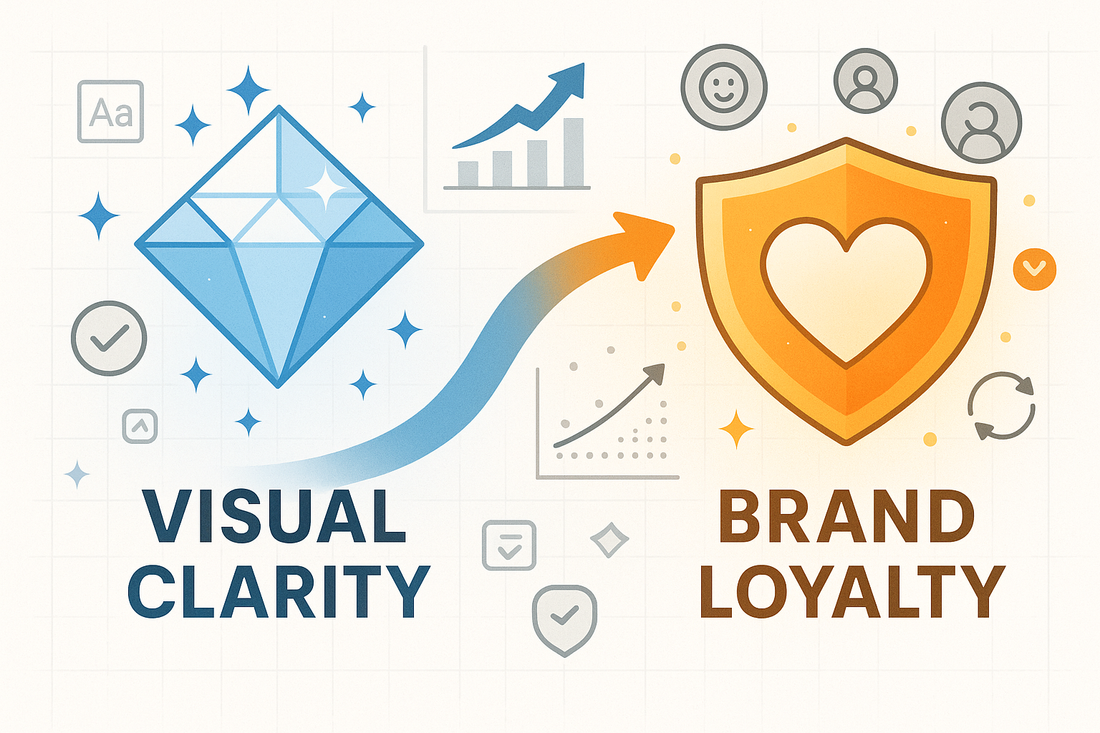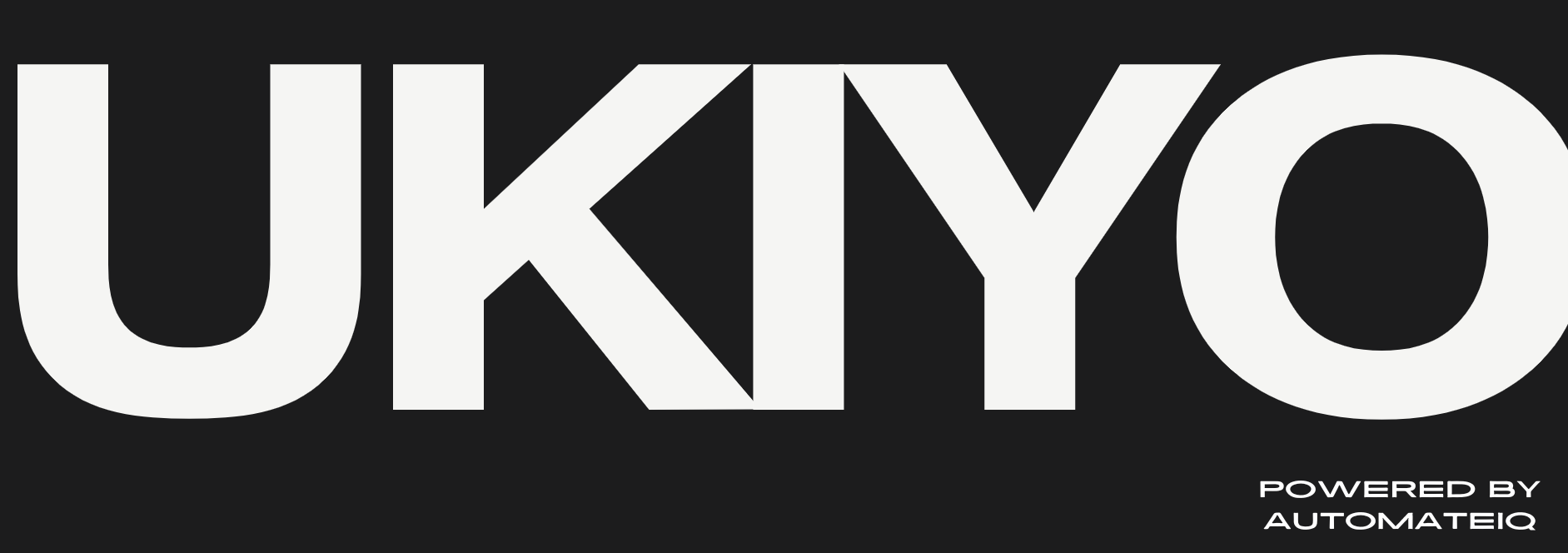In a landscape saturated with visual noise and fragmented attention, brand loyalty is increasingly being shaped by one often-overlooked principle—visual clarity. For design-driven founders and marketers operating in the aesthetic economy, visual coherence is not simply a design decision; it is a strategic growth tool that directly influences customer trust, retention, and long-term brand affinity.
The demand for visual clarity spans industries but is especially prevalent among D2C brands, content-led creators, and high-growth e-commerce ventures. With algorithms rewarding consistency and consumers judging credibility at first glance, clarity has become a core metric of brand performance.
This article examines the direct correlation between visual clarity and brand loyalty, offering examples, research-backed insights, and actionable strategies to help design-forward businesses scale with intention.
Why Visual Clarity Builds Brand Trust
Visual clarity refers to the harmony of design elements that guide users through a brand’s digital or physical presence without friction. It includes consistency in typefaces, color palettes, layout structure, iconography, and interaction design. Clarity signals stability, order, and intention—qualities that psychologically reinforce credibility.
A study from the Journal of Consumer Research revealed that consumers form lasting impressions within just 0.05 seconds of landing on a brand’s website, with visual appeal being the primary driver of trust. When users are met with clarity—predictable structure, clean design, and logical flow—they’re more likely to engage, explore, and return.
Shopify’s conversion best practices affirm that landing pages with fewer visual distractions and tightly controlled hierarchy consistently outperform more experimental or disjointed layouts (Shopify Blog).
The Cost of Visual Noise
The opposite of clarity is cognitive overload. Brands that overuse color, switch between inconsistent styles, or fail to guide the eye suffer from visual friction that erodes consumer confidence. In e-commerce, this confusion often translates to lower cart completion rates and higher bounce percentages.
One founder of a fashion brand featured on Adweek shared how a redesign focusing on minimalism—removing excessive graphics, tightening layout spacing, and standardizing typography—resulted in a 27 percent increase in repeat customer transactions over three months.
When users encounter dissonance in branding, it introduces doubt. This is particularly damaging for businesses relying on recurring revenue models, where long-term trust is non-negotiable. Design coherence reinforces that a brand can be relied on, not just to deliver once, but repeatedly.
UX and Loyalty: More Connected Than Most Realize
User experience (UX) design plays a crucial role in visual clarity. UX is where form meets function, and when structured correctly, it elevates usability without drawing attention to itself. Founders often underestimate the degree to which UX impacts loyalty.
According to a McKinsey report on design-driven growth, businesses that scored highest on design maturity outperformed industry benchmarks by 2:1 in terms of customer loyalty and digital conversion. The report emphasized that design consistency across touchpoints (from website to packaging to email templates) was a key differentiator.
Visual clarity in UX design does not mean blandness. It means delivering an experience that feels intuitive, emotionally aligned, and technically polished. Brands working with Ukiyo Productions have adopted design systems that allow scalable clarity—automating consistency across ads, landing pages, email, and product interfaces.
Emotional Safety Through Aesthetic Consistency
Visual clarity also creates a feeling of emotional safety, which strengthens brand affinity. A consistent visual system reduces the mental effort required to understand or navigate a brand. This repetition builds familiarity, and familiarity builds preference.
This psychological phenomenon—known as the "mere exposure effect"—has been validated across behavioral studies. The more visually familiar something becomes, the more it is perceived as trustworthy and likable. Brands like Muji, Apple, and Glossier thrive on this exact premise.
A D2C skincare startup integrated a modular design system into their product launch workflow, using templates from Ukiyo’s Product Launch Planner. Within six months, their customer retention rate improved by 19 percent, attributed in part to the seamless visual experience across their onboarding, product pages, and retargeting ads.
How Algorithms Respond to Visual Consistency
Beyond customer behavior, platform algorithms are also tuned to reward visual clarity. Social platforms such as Instagram and TikTok prioritize content that aligns with recognizable visual systems—cohesive color grading, consistent framing, and branded overlays tend to receive better engagement.
HubSpot’s social media analysis found that branded content with uniform design styles outperformed non-branded visuals by 36 percent in click-through rates. On Pinterest, content that adheres to consistent pin styles sees nearly 50 percent higher saves and shares (HubSpot Blog).
These findings confirm that visual consistency is not just aesthetically pleasing but algorithmically strategic. Brands using automation tools like Make or Zapier can distribute consistent visuals across multiple channels simultaneously, reinforcing identity and boosting performance.
Practical Ways to Build Visual Clarity
To harness visual clarity as a loyalty engine, brands can follow several structured steps:
1. Define a Visual System:
This includes typography, color codes, image treatment, icon style, and layout spacing. This system should guide every brand touchpoint, from email headers to loading animations.
2. Use a Design System Template:
Build reusable blocks or frameworks for product launches, social posts, and ad creatives. Tools like Canva Pro and Figma allow teams to maintain aesthetic discipline while operating at speed.
3. Align UX with Visual Identity:
UX wireframes and interaction patterns should reinforce the brand’s visual logic. Avoid introducing unexpected behaviors or disruptive visual shifts between pages.
4. Automate with Aesthetic Logic:
Use automation platforms to auto-assign brand visuals to campaigns or segment-based flows. This ensures visual consistency even as content scales.
5. Conduct a Visual Audit:
Evaluate all current assets—homepage, product pages, emails, social profiles—for alignment with your core visual identity. Prioritize areas where inconsistency could introduce distrust.
Case Example: Scaling Clarity in a Creative Product Business
A tech-accessory company launched with handcrafted product photos and pastel packaging. Initially, their visuals were inconsistent across Etsy, Instagram, and their Shopify site. Working with a design strategist, they implemented a universal aesthetic system based on Ukiyo’s creative frameworks.
They unified product mockups, standardized user-generated content editing, and restructured their navigation UI for clarity. The outcome was a 38 percent increase in returning customer rate and a notable uptick in positive reviews mentioning “clean,” “easy,” and “beautiful.”
This demonstrates that visual clarity is not only about first impressions—it compounds value over time.
Clarity as a Differentiator in the Aesthetic Economy
The aesthetic economy rewards brands that blend beauty with precision. Visual clarity enables recognition, builds emotional fluency, and creates systems that can scale trust. It is not just design—it is performance.
Brands that understand this correlation and invest in clarity-first systems gain measurable advantage across user acquisition, retention, and revenue. Especially for design-forward teams, the decision to standardize visual output is a decision to deepen loyalty.
For creative founders looking to align visuals with brand systems, the Ukiyo resource library offers frameworks and templates that bridge design with automation, helping brands scale clarity without compromising originality.






0 comments